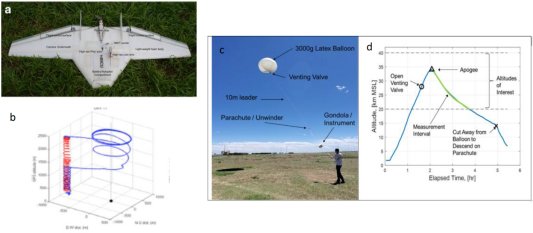研究課題
Studies on atmospheric turbulence based on radar and in-situ measurements: analyses and prospective
レーダーや現場観測による大気乱流の研究:分析と将来性
研究組織
| 代表者 | Hubert Luce (RISH, Kyoto University) |
|---|---|
| 共同研究者 | A. Doddi (University of Colorado) H. Hashiguchi (RISH, Kyoto University) M. Yabuki (RISH, Kyoto University) L. Kantha (University of Colorado) D. Lawrence (University of Colorado) |
| 関連ミッション |
|
研究概要
Atmospheric turbulence affects the humanosphere through many practical aspects. Clear air turbulence (CAT) can be hazardous to aviation comfort and safety and, according to recent studies, the frequency of severe CAT is expected to increase due to global warming. In addition to large-scale dynamic processes, CAT may also contribute to the vertical transport of admixtures and energy, even in the stratosphere. Turbulent mixing is a major factor of vertical exchange flux between tropospheric and stratospheric airs in frontal zones through various mechanisms and between the convective boundary layer (CBL) and the free troposphere in the entrainment zone. The main goal of research is to make quantitative measurements of turbulence parameters from clear air (VHF/UHF) radar data based on models and methods, revisited in light of direct estimates from innovative in-situ techniques.
This goal can be achieved owing to a scientific collaboration initiated by RISH and Colorado University (CU) from 2013. CU has been developing small and low-cost unmanned aerial vehicles (UAV) called DataHawks for turbulence parameter measurements since the late 2000s. Three coordinated field campaigns using DataHawks, called ShUREX (Shigaraki UAV-Radar Experiments), were conducted at Shigaraki MU observatory in late springs 2015–2017. The DataHawks were mainly equipped with ultra-high resolution sensors of temperature and velocity to measure two key turbulence parameters, namely the temperature structure parameter CT2 and the kinetic energy dissipation rate ε. The wealth of the radar and UAV datasets collected under various atmospheric conditions is such that a large variety of aspects on turbulence can still be investigated. At present, our investigations allowed us to evaluate different models used to retrieve turbulence parameters for stratified and convective conditions. The datasets still contain a large amount of information to analyze, permitting us to investigate the decaying stage of turbulence in the CBL and in sheared regions in the free troposphere. Based on these experiences, a new ShUREX campaign was planned for 2020 but was postponed twice (in 2021 and then in 2022) due to issues with Covid19. These delays will not allow us to complete the database this year with additional lidar data.
The efficiency of CAT to the vertical transport in the stratosphere is still a subject of debate in the literature. Unfortunately, UAV flights are technically restricted to the lower troposphere and cannot be used for high altitude observations. For this reason, CU is developing a small balloon system (called HYFLIT) equipped with the same sensors as DataHawks and designed to take measurements during the balloon descent owing to a vent valve system to avoid balloon wake. Thanks to the reliability of the sensors attested by the previous campaigns, comparisons with MU radar observations and the methods currently used to derive turbulence parameters from radar data should shed new light on the subject. A field campaign at Shigaraki MU Observatory is planned in summer 2022 and preliminary analyses of balloon data collected during test campaigns will be performed in the meantime in coordination with CU.
 (a) A CU DataHawk UAV, (b) a DataHawk flight near the MU radar, (c) a HYFLIT balloon, (d) A balloon altitude versus time.
(a) A CU DataHawk UAV, (b) a DataHawk flight near the MU radar, (c) a HYFLIT balloon, (d) A balloon altitude versus time.
ページ先頭へもどる
2021年8月10日作成


